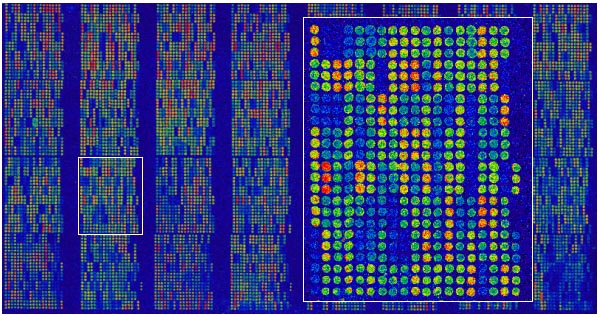Quality microarray printing is a very delicate process, which involves great care in every step of the production process from cleaning the pins to the printing. The effectiveness of the microarray in recent research applications in molecular biology has been primarily due to the quality of the microarray production process. Generally, there are five key components that a company will take into account when printing high quality microarrays. They are:
-
Micro Spotting Pins
-
Microarrayer
-
Sample preparation
-
Printing Environment
-
Surface Chemistry
The Pins
The pins are the ends in the production process of printing microarrays. And as such high-quality pins have to be used to ensure equally high-quality printing of the microarrays. The pins themselves cannot be damaged, clogged or contaminated with bacteria or previous samples. Traditionally, it is recommended that the pins be cleaned after every batch of microarray printing which takes only about 15 minutes to complete. Another problem to consider is the moisture in the area of printing. Ensure that the pins are completely dry when loading a new set of samples. If they are not, then the water might contaminate and dilute the probes. Here are the steps for the cleaning procedure.

-
Suspended the pins in a container with any micro cleaning pins solution. Be sure that no side of the pins touches the container. Then sonicate the pins for about 5 to 10 minutes to rid it of any microscopic bacteria
-
Wash the pins in hot water
-
Repeat step one. However, this time instead of the solution pour some distilled water sonicating the pins for a further 3 minutes
-
Dry the pins using high-pressure air that is particle free to ensure that nothing latches on to the surface of the pins.
-
Be sure to put a protective cover on the pins once you are done
The Sample
When printing microarrays, the sample preparation is one thing that really counts towards quality. Preparation depends on a number of variables, such as the method of production used, the quantity of microarrays being printed and the size of the sample. If the products are being produced using a spotting method then using the membrane binding purification methods is cleaning is recommended. The ethanol precipitation method or kits that use size exclusion as a purification method are not to be used because they can cause trace contamination that can clog spotting pins and attach DNA attachment to the printing mechanism.
The Substrates
The substrates are the material on which the probes are printed. Depending on the level of customization, each probe has to have a specific amount of DNA printed on it. However, if the substrates are not homogenous, that is if they are not the same in terms of quality and the number of reactive groups, then that can provide wrong results for the laboratory. Another factor to take into account when looking for quality substrates is that the surface needs to be as flat as possible. Using microscope analysis, one can judge whether the substrates will be able to absorb the same amount of DNA each time it is printed.
Jonathan Hart is one of the top field experts in microbiology. For more information on microarrays, go on to arrayjet.co.uk.



